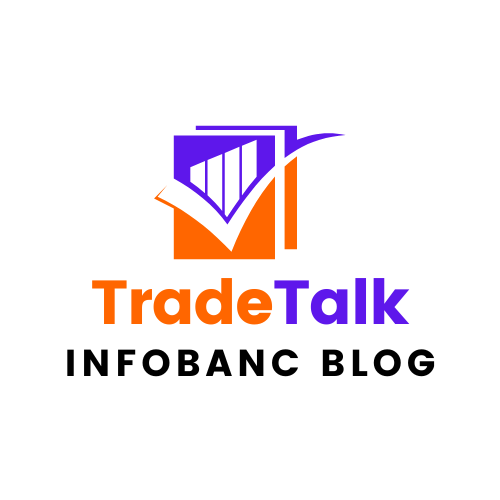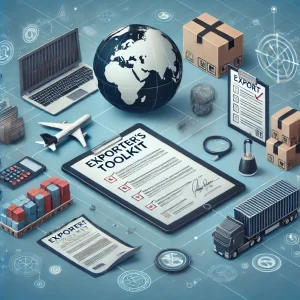Exporting your products to international markets can be a game-changer for your business. It opens up new revenue streams, expands your customer base, and boosts your brand’s global presence. However, getting started with exporting can be daunting. To help you on your journey, we’ve put together an Exporter’s Toolkit full of export resources – websites, and guides that will make the process smoother and more manageable. Whether you’re a small business owner or an established company, this guide will equip you with everything you need to succeed in overseas markets.
Understanding the Basics of Exporting
Before diving into the tools and export resources, it’s crucial to understand the basics of exporting. Exporting involves selling your products or services to customers in another country. This process requires careful planning, including understanding market demand, complying with regulations, managing logistics, and handling payments.
Key Considerations:
- Market Research: Identify potential markets where your products are in demand.
- Regulations: Understand the export regulations in your country and the import regulations in the target market.
- Logistics: Plan how to ship your products, considering costs, transit times, and customs procedures.
- Payments: Ensure secure and timely payment methods are in place.
Essential Websites and Export Resources
The internet is filled with valuable resources for exporters, but knowing where to look can save you time and effort. Here’s a list of some of the best websites and tools that can help you start and grow your export business.
1. Export.gov
Export.gov is a one-stop resource for U.S. exporters, but it’s also useful for exporters from other countries. It provides market research, trade data, and how-to guides on various aspects of exporting. The website also offers tools to help you identify potential markets and navigate international trade regulations.
Example: A small U.S.-based company used Export.gov to access market research reports on the Middle East. This helped them identify Saudi Arabia as a promising market for their health supplements, leading to successful expansion.
2. International Trade Centre (ITC)
The International Trade Centre (ITC) offers a wide range of resources for exporters, including market analysis tools, trade statistics, and guides on export procedures. ITC’s Export Potential Map is particularly useful for identifying markets with the highest potential for your products.
Resource Highlight: Export Potential Map – This tool helps you discover untapped export opportunities by analyzing demand, market access conditions, and trade competitiveness.
Case Study: An African textile company used ITC’s Export Potential Map to discover high demand for their products in European markets. With this insight, they successfully entered the German market, doubling their export revenue within a year.
3. World Bank’s Doing Business Portal
The World Bank’s Doing Business Portal provides information on the business environment in different countries. It covers topics like starting a business, dealing with construction permits, and trading across borders. This resource is invaluable for understanding the regulatory environment in your target markets.
Tip: Use the “Trading Across Borders” section to learn about the procedures, time, and costs involved in importing and exporting goods in various countries.
4. Trade Map (by ITC)
Trade Map provides detailed trade statistics and market access information. It’s an excellent tool for analyzing export trends, identifying new markets, and assessing market share.
Example: A Canadian seafood exporter used Trade Map to analyze global seafood trade flows. By identifying growing demand in Japan, they were able to target Japanese buyers and expand their business successfully.
5. Alibaba and Global Sources
If you’re sourcing products for export, platforms like Alibaba and Global Sources can be invaluable. These websites connect you with manufacturers and suppliers from around the world. They also offer tools for verifying supplier credentials and negotiating deals.
Pro Tip: Always use the “Verified Supplier” filters to ensure you’re dealing with reputable suppliers.
6. The Federation of International Trade Associations (FITA)
FITA offers a wealth of information on international trade, including links to trade leads, market research, and export finance. Their Global Trade Portal is a valuable resource for finding trade opportunities and networking with other exporters.
How-To Guides for Exporters
Having the right information is crucial when you’re planning to export. These how-to guides provide step-by-step instructions on various aspects of exporting, from market research to managing logistics.
1. How to Create an Export Plan
An export plan is your roadmap to international success. This guide from Export.gov walks you through the process of creating an export plan, including setting goals, researching markets, and developing a pricing strategy.
Tip: Start small by targeting one or two markets initially. This allows you to test your export plan and make adjustments before expanding further.
2. Understanding Export Documentation
Export documentation is one of the most challenging aspects of exporting. This guide from the International Chamber of Commerce (ICC) explains the different types of documents you’ll need, including invoices, bills of lading, and certificates of origin.
Example: A French wine exporter learned the hard way about the importance of proper documentation when a shipment was held at customs due to an incomplete certificate of origin. After this experience, they started using the ICC guide to ensure all documentation was in order, preventing further delays.
3. Navigating Export Regulations and Compliance
Export regulations can be complex and vary by country. The U.S. Department of Commerce’s Bureau of Industry and Security (BIS) provides a comprehensive guide on export controls and compliance, ensuring you stay on the right side of the law.
Case Study: A tech company exporting software to the Middle East used the BIS guide to navigate export controls related to encryption technology, avoiding hefty fines and ensuring a smooth export process.
4. How to Find and Qualify Overseas Buyers
Finding reliable buyers is crucial to your export success. This guide from the Small Business Administration (SBA) outlines strategies for finding and qualifying overseas buyers, including attending trade shows, leveraging online platforms, and working with export intermediaries.
Pro Tip: Attend international trade shows to meet potential buyers in person and establish trust. Virtual trade shows are also becoming popular and can be a cost-effective way to connect with buyers.
Real-Life Examples and Case Studies
Learning from others’ experiences can provide valuable insights and help you avoid common pitfalls. Here are a few real-life examples and case studies that illustrate successful exporting strategies. These export resources are invaluable !
Case Study 1: Expanding into the European Market
A small cosmetics company in India wanted to expand into Europe. They used ITC’s Export Potential Map to identify the UK as a high-potential market. By partnering with a local distributor and attending trade shows in London, they successfully launched their products and established a strong presence in the UK market.
Key Takeaway: Thorough market research and local partnerships are crucial when entering a new market.
Case Study 2: Overcoming Language Barriers
A U.S.-based manufacturer of industrial machinery wanted to export to South America but faced language barriers. They hired a bilingual sales representative familiar with the region’s culture and language. This move helped them build relationships with local buyers and significantly increased their sales in the region.
Key Takeaway: Understanding and overcoming cultural and language barriers is essential for successful exporting.
Tips for First-Time Exporters: Export Resources
If you’re new to exporting, these tips will help you get started on the right foot.
- Start Small and Scale Gradually: Begin with one or two markets and gradually expand as you gain experience.
- Invest in Market Research: Use resources like Export.gov and ITC tools to understand your target markets.
- Build a Strong Network: Attend trade shows, join export associations, and connect with other exporters to build your network.
- Focus on Quality: Ensure your products meet international quality standards to build trust with overseas buyers.
- Stay Informed: Keep up-to-date with the latest export regulations and market trends to stay ahead of the competition.
Conclusion
Exporting can be a rewarding venture that takes your business to new heights. With the right tools, resources, and strategies, you can navigate the complexities of international trade and achieve success in global markets. This Exporter’s Toolkit provides a solid foundation to help you get started and grow your export business. Remember, every successful exporter started somewhere—why not start your journey today?
Call to Action
Ready to take your business global? Subscribe to our blog for more tips, resources, and success stories that will help you navigate the world of exporting with confidence.

